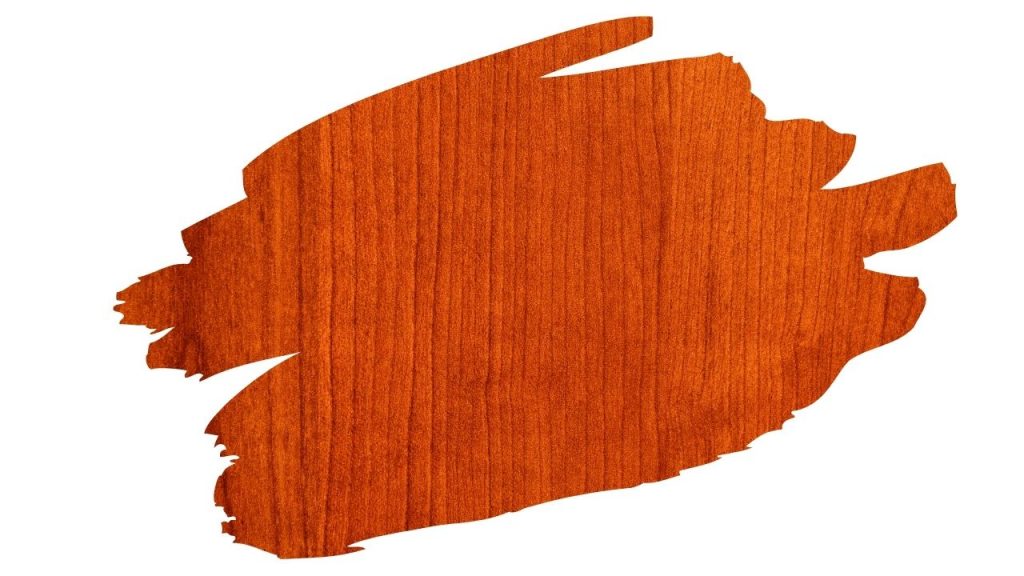Cherry wood is a wonderful type of lumber that’s not only beautiful, but durable and easy to work with.
And, one of the most popular characteristics of Cherry wood is its brownish-red hue. Pale pink when freshly cut, Cherry woods natural color progression darkens over time (as a result of oxidisation).
But if your particular piece of cherry lumber isn’t as bold as you’d like, how do you darken cherry wood?
Well, there are two things that cause cherry wood to darken; Air and UV rays. Cherry wood oxidizes once you peel away it’s bark and expose it to UV rays and oxygen. This oxidisation process is what causes cherry wood to darken.
But, cherry wood doesn’t darken very quickly. It can take up to a year for it to naturally reach that reddish tone we all love so much.
So, what can you do to help speed things up a bit? Well, we get into all of that and more below…

This post may contain affiliate links to products that we receive a commission for (at no additional cost to you). Learn more here.
Does The Sun Darken Cherry Wood?
Yes, exposure to the sun can darken cherry wood. In fact, direct exposure to the suns UV rays can darken cherry wood up to 4 times faster!
Most of the deep color change in cherry occurs during the first year (as it oxidises in indirect sunlight).
However, if you place cherry wood outside – exposing it to direct sunlight – you can get the same level of color change in as little as 3 months.
How Do You Darken Cherry Wood In The Sun?
Simply place it outside during the summer months throughout the daytime… and get those UV rays on it.
You see, while other types of wood may require you use chemical products to add tone, cherry wood has its own natural ‘stain’ so it can be simply placed outside in the sun. The sunlight will do the rest.
And if you trying to darken planks of cherry wood, then make sure you turn them over every few hours so that they get an even ‘tan’ all over.
How Long Does It Take For Cherry Wood To Darken?
In indirect or otherwise low sunlight, it can take up to a year for it to reach up to 80% of its deep color change. But it can take years for it to fully reach its optimal dark brown-reddish tone.
But sometimes, you just don’t have the patience to wait for cherry wood to do its thing. I’ve personally had this issue with darkening a particular cherry wood piece in my workshop (not a lot of direct sunlight in there).
So, an alternative way of darkening it (besides waiting for the natural process to take place) is to use a wood stain.
Can You Simply Stain Over Cherry Wood Instead?
If waiting around for the sun to shine isn’t working out for you, then you can try darkening cherry wood using wood stain instead.
Now, full disclosure, cherry wood is a frustratingly tricky lumber to stain.
And here’s why. If you apply any stain directly onto it, cherry wood soaks the stain up so unevenly the finished product looks all blotchy and a mess.
The way around this problem then would be to use a pre-stain wood conditioner. The conditioner will soak into the grain – which would then force the wood stain to evenly penetrate the surface of that lumber.
And the end result is a stain coat that doesn’t look blotchy.
Related Post: What To Do When Staining Over Wood Filler Gives Blotchy Results
Unfortunately, a key disadvantage to adding stain is that it will make it difficult for cherry wood to fully darken naturally over time.
So, long story short, yes you can stain over cherry wood, but only if you use a pre-stain conditioner. However, would you really want to?
To Wrap Up…
Let’s quickly go back over the basics. The reason why cherry wood becomes darker over time is simply due to its exposure to oxygen and UV rays.
Cherry wood has a rich, deep red color that varies from a reddish brown to a deep burnt crimson. And if left to its own devices, this lumber will deepen in tone even in indirect sunlight, without you having to lift a finger.
However, if cherry is left outside in an oxygen rich sunny environment it will darken much, much faster.
References
Causes of color changes in wood during drying | SpringerLink

